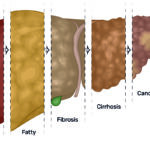Lowering the Risk of Cardiovascular Disease
Lowering the risk of cardiovascular disease is quite imperative as cardiovascular disease (CVD) remains a leading cause of mortality globally, yet it is largely preventable through a combination of lifestyle modifications, dietary changes, and appropriate medical interventions.
Understanding the multifaceted approach to lowering the risk of CVD can empower individuals to take proactive steps towards maintaining heart health.
Lifestyle Modifications
- Smoking Cessation: Smoking is one of the most significant risk factors for cardiovascular disease. Quitting smoking and avoiding second-hand smoke can drastically reduce the risk of heart attacks and strokes.
For those struggling to quit, professional help in the form of counseling, behavioral therapy, and pharmacological interventions such as nicotine replacement therapy (NRT) can be highly effective.
- Physical Activity: Regular physical activity is crucial for cardiovascular health. Engaging in at least 30 minutes of moderate-intensity exercise most days of the week (totaling a minimum of 150 minutes per week) can help manage weight, lower blood pressure, improve cholesterol levels, and enhance overall heart function.
Dietary Changes
- Healthy Eating: A heart-healthy diet is rich in vegetables, fruits, whole grains, lean proteins, and healthy fats. Limiting saturated and trans fats, reducing salt intake, and ensuring adequate consumption of omega-3 fatty acids (found in oily fish and certain supplements) are essential dietary measures.
Specifically, reducing intake of saturated fats to less than 8% of total energy intake and incorporating foods high in Eicosapentaenoic acid (EPA), Docosahexaenoic acid (DHA), and Alpha Linolenic Acid (ALA) can support optimal cholesterol levels and reduce inflammation.
- Alcohol Moderation: Moderating alcohol consumption is vital. Men should limit their intake to no more than two standard drinks per day, and women should limit it to one. Excessive alcohol intake can lead to high blood pressure, heart failure, and other cardiovascular issues.
Medical Interventions
- Blood Pressure Management: High blood pressure is a major risk factor for CVD. Those with existing heart disease, diabetes, kidney disease, or a history of stroke should aim to maintain a blood pressure of less than 130/80 mm Hg. Medications, along with lifestyle changes, are often necessary to achieve this goal.
- Cholesterol Control: Maintaining healthy cholesterol levels is critical. The target levels are an LDL cholesterol of less than 2.0 mmol/L, HDL cholesterol of more than 1.0 mmol/L, and triglycerides of less than 1.5 mmol/L. Statins are the primary drugs used to lower LDL cholesterol, but other medications such as fibrates, ezetimibe, and niacin can also be prescribed, especially for individuals with diabetes or atherosclerosis.
- Blood Sugar Regulation: For those with diabetes, stringent control of blood sugar levels is essential to prevent cardiovascular complications. The goal is to keep HbA1c levels below 7%, which may require a combination of dietary management, physical activity, and medications.
- Use of Preventative Medications: Other medications that can lower the risk of cardiovascular events include antiplatelet agents (e.g., aspirin, clopidogrel) to prevent clot formation, ACE inhibitors and ARAs to support cardiac function, beta blockers to reduce blood pressure and heart rate, and aldosterone antagonists to prevent heart failure. Additionally, lowering homocysteine levels through supplementation with vitamins B6, B12, and folic acid can also contribute to cardiovascular health.
Lowering the risk of cardiovascular disease involves a comprehensive approach that combines lifestyle modifications, dietary adjustments, and appropriate medical treatments. By addressing these factors holistically, individuals can significantly reduce their risk of developing cardiovascular diseases and enhance their overall quality of life. Regular consultations with healthcare providers are crucial to tailor these strategies to individual needs and ensure optimal heart health.Top of FormBottom of Form
Risk Factors for Cardiovascular Disease
Cardiovascular diseases (CVD) are influenced by several risk factors. Some of these are unchangeable, while others can be modified to lower the risk.
Unchangeable Risk Factors
- Advancing Age: The risk of CVD increases with age.
- Sex: Men are generally at higher risk, while women face increased risk after menopause.
- Genetic Predisposition: A family history of heart disease can increase risk.
Modifiable Risk Factors
- Smoking
- Obesity
- Lack of Physical Activity
- Unhealthy Diet
How to Lower the Risk of Cardiovascular Disease
Reducing the risk of cardiovascular diseases involves making lifestyle and behavioral changes:
Cessation of Smoking
- Goal: Complete cessation of smoking and avoidance of second-hand smoke.
- Approach: Both patients and their families should stop smoking. Those unable to quit may need professional help through counseling, behavioral therapy, and pharmacological therapy.
- Medication: Nicotine replacement therapy (NRT) is the first-line choice of medication.
Nutrition
- Goal: Ensure a healthy diet.
- Guidelines:
- Limit saturated and trans fatty acids to no more than 8% of total energy intake.
- Consume approximately 1g of Eicosapentaenoic acid (EPA) and Docosahexaenoic acid (DHA), and more than 2g of Alpha Linolenic Acid (ALA) daily.
- Include vegetables, fruits, legumes, grain-based foods, moderate amounts of lean meats, poultry, fish, and reduced-fat dairy products.
- Obtain EPA and DHA from oily fish and marine n-3 (fish oil) supplements.
Alcohol Consumption
- Guidelines:
- Men: No more than 2 standard drinks per day.
- Women: No more than 1 standard drink per day.
Physical Activity
- Goal: Achieve at least 30 minutes of moderate-intensity physical activity on most days of the week (minimum 150 minutes per week).
Maintaining a Healthy Body Weight
- Goals:
- Waist Measure: ≤ 94 cm in men and ≤ 80 cm in women.
- Body Mass Index (BMI): Maintain between 18.5 and 24.9 kg/m².
By adhering to these guidelines, individuals can significantly lower their risk of developing cardiovascular diseases.
Lowering Blood Cholesterol
The goal of therapy for managing blood cholesterol should be to maintain:
- Low-Density Lipoprotein (LDL): Less than 2.0 mmol/L
- High-Density Lipoprotein (HDL): More than 1.0 mmol/L
- Triglycerides (TG): Less than 1.5 mmol/L
To achieve these levels, pharmacotherapy is often used. Statins are the most commonly prescribed lipid-lowering drugs. Individuals with diabetes and atherosclerosis require particularly stringent cholesterol control. Other lipid-lowering medications include:
- Fibrates: Such as gemfibrozil and clofibrate.
- Ezetimibe: Reduces cholesterol absorption in the intestines.
- Niacin: Helps to lower LDL and triglycerides while raising HDL.
Lowering Blood Pressure
High blood pressure is a significant risk factor for cardiovascular disease. Those with coronary heart disease, diabetes, kidney disease, or a history of stroke need to maintain tight blood pressure control. The target should be a blood pressure of less than 130/80 mm Hg.
Diabetes and Blood Sugar Control
Individuals diagnosed with diabetes must manage their blood sugar levels carefully to prevent cardiovascular damage. The goal is to keep HbA1c levels below 7%.
Other Drugs to Lower Cardiovascular Disease Risk
Several other medications can help lower the risk of cardiovascular diseases:
- Antiplatelet Agents: Drugs such as aspirin and clopidogrel can prevent heart attacks by reducing the tendency of blood to clot.
- ACE Inhibitors and Angiotensin II Receptor Antagonists (ARAs): Medications like enalapril, captopril, lisinopril (ACE inhibitors), and losartan, candesartan, telmisartan (ARAs) aid in cardiac remodeling and prevent cardiovascular events, including heart attacks and kidney damage.
- Beta Blockers: Drugs like atenolol, metoprolol, and carvedilol help lower blood pressure and reduce the risk of heart attacks.
- Aldosterone Antagonists: Spironolactone can help prevent heart failure and other cardiovascular conditions.
- Homocysteine Reduction: Regular supplementation with vitamins B6 and B12, and folic acid can help reduce blood levels of homocysteine, a risk factor for cardiovascular disease.
By adhering to these guidelines and medications, individuals can significantly lower their risk of cardiovascular diseases and maintain better overall heart health.
Benefits of Eating Pomegranate
Foods to help with Constipation

A graduate of Computer Science and Information Management Technology. Diploma – Caregiving, Certificates – Dementia and Diabetes Awareness and Management. A researcher, blogger, songwriter, singer and acoustic guitarist. Born in an environment where natural talents such as healing are imparted at our natural birth. This natural talents of healing is the result of our genetic inheritance and the training from family environment.



















